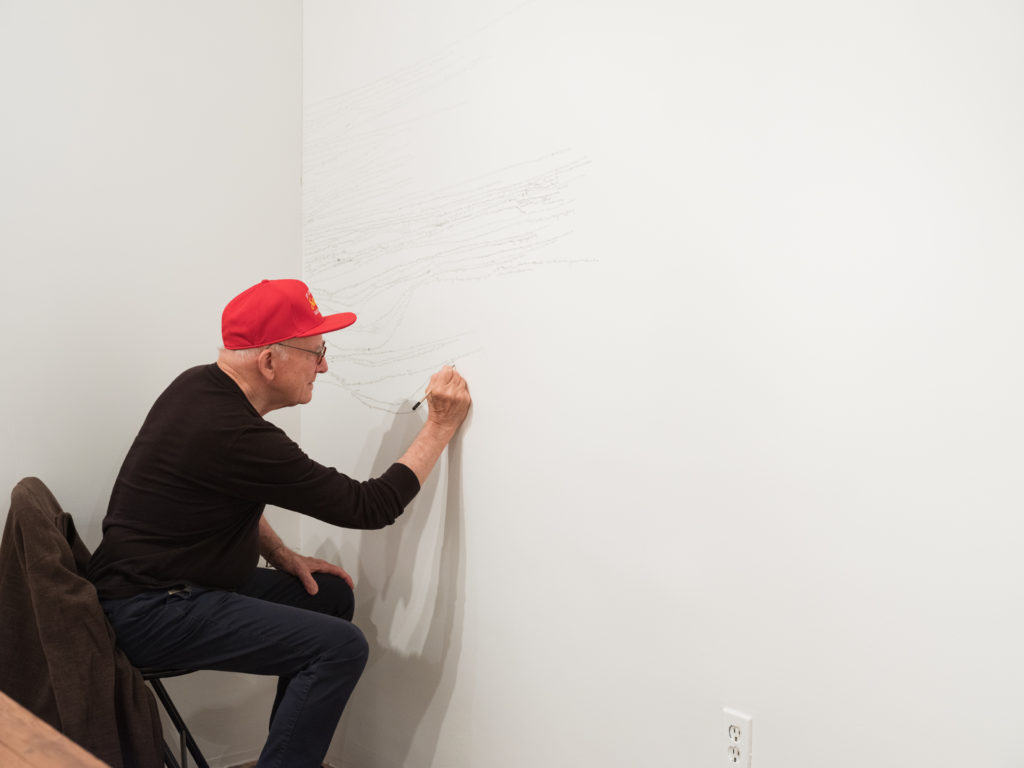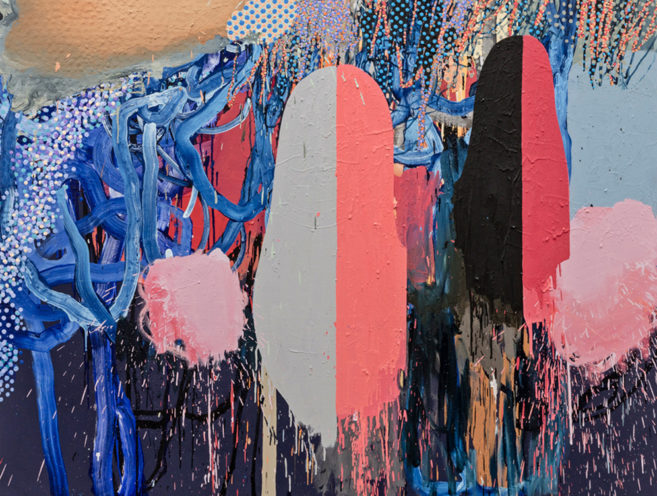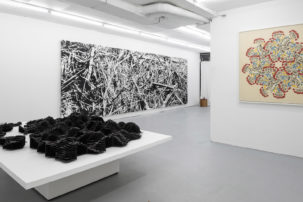Getting into CSA Space feels oddly reminiscent of navigating the labyrinthine heritage buildings at the Nova Scotia College of Art and Design, where Garry Neill Kennedy was president from 1967 to 1990. Up the stairs from Pulpfiction Books, the second-floor gallery, which is roughly the size of a small classroom, was recently the site of Kennedy’s exhibition “Remembering Names.” Here Kennedy extended a project initially conceived in the early 1970s, and repeated several times in the following decades, in which he attempts to recall and record the names of people he has met since childhood. At 83 years of age, Kennedy’s memory has begun to be affected by dementia, which imbues the labour of “Remembering Names” with the significant shift from mental exercise to degenerative struggle, where there were no mannered heroics in the artist’s effort to map out the people of his past.
Kennedy sat on a little black chair in a corner of the gallery writing names on the wall in pencil. The punitive scenario of writing lines in the corner reminded of us of John Baldessari’s famous Punishment Piece (1971), performed as part of David Askevold’s Projects Class at NSCAD, in which students were instructed to write “I will not make any more boring art” over and over again on the walls of the college’s Mezzanine Gallery. Beyond Kennedy’s wall drawing, which strongly evoked the artist’s seated body with the lines of names going up as high and as far to the side as Kennedy could reach, there is only an unframed black-and-white photo of his high-school basketball team, the Saints. In his hometown of St. Catharines, Ontario, Kennedy was an accomplished athlete, participating in track and field, football and rowing at a competitive level. It would seem that the photograph, in which some of the players pictured have their names written in pen over their chests, served here as a concrete prompt to ground the artist back to a time of clarity. Similarly, the photograph functions like the assistance Kennedy received from artist friends, colleagues and visitors during the exhibition. The work’s parameters are not strictly a memory test, but rather, as his partner Cathy Busby describes, a “social project” including primary “care share” with others (David MacWilliam, Graeme Meizener, Keagan McFadden, Hank Bull, Dorit Cypis and Busby among them). These real-life interactions spurred a kind of cerebral algorithm, granting access to new or recollected networks of people. Even still, the question remained as to where Kennedy’s memory ends and the merger with another’s begins.
Kennedy was in good spirits in his Saints baseball cap. He was quiet and endearing. He included our names on the wall, letter by letter as we spell them aloud. Along with Bull, who was present during our visit, we participated in the roll of mnemonic catalysts. Suddenly, Kennedy stood to give an anecdote about the photograph, explaining that it was taken following the winning of a championship game. Here sentimentality intersected with the indexical unsentimentality of conceptual art. “Remembering Names” was no simple informational challenge—its public presence actively destigmatized aging and memory loss through the productivity of these conditions. Knowing that Kennedy’s artistic practice has long been rooted in the criticism and enactment of bureaucracy, ranging from office politics in projects such as E (1980) and Finchwell Revisited (1985/2016) to corporate greed and governmental authority in The Big Five (2014) and Ya Ummi, Ya Ummi (2017), “Remembering Names” felt to be as much a critique of the conventions for recording institutional significance as about accessing one’s dematerialized mental inventory in the honest and profound embrace of aging.

Garry Neill Kennedy at work on Remembering Names, 2018. Photo: Rachel Topham Photography.







